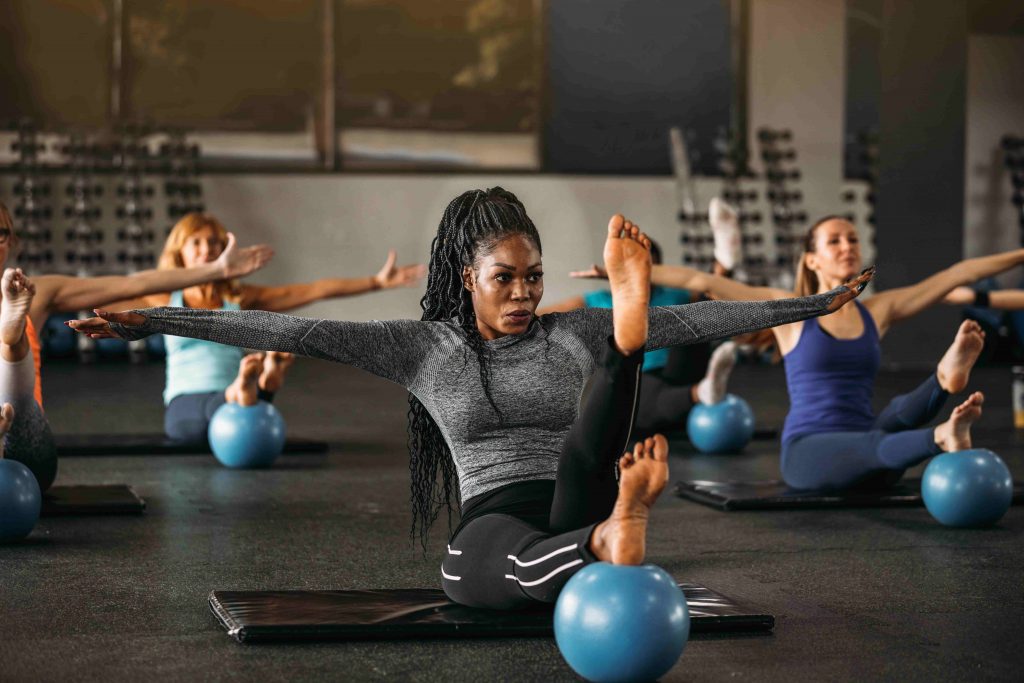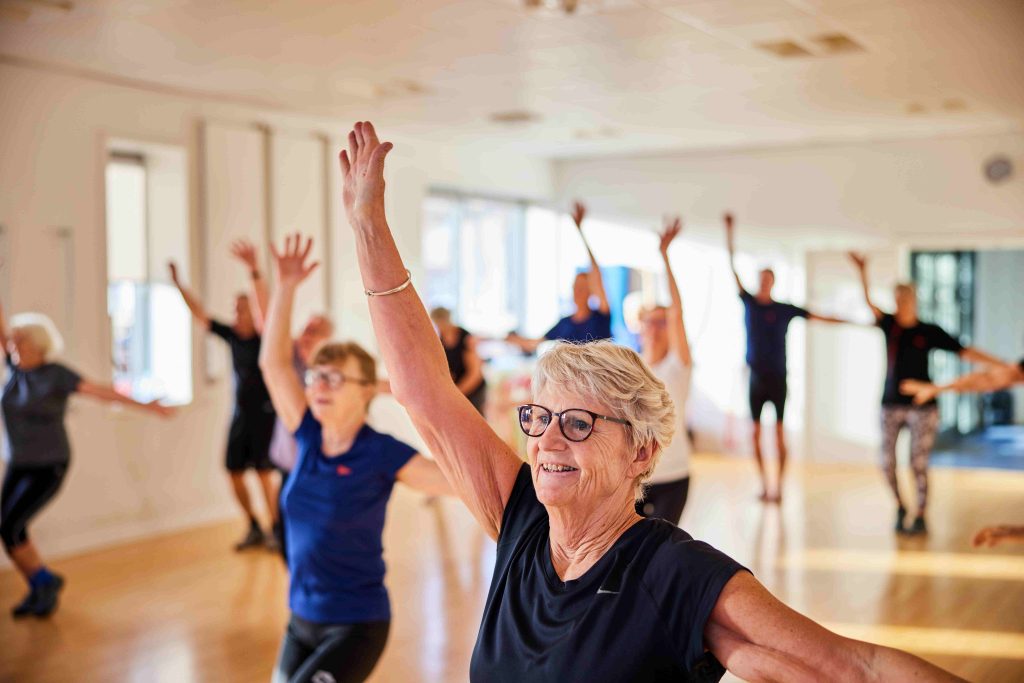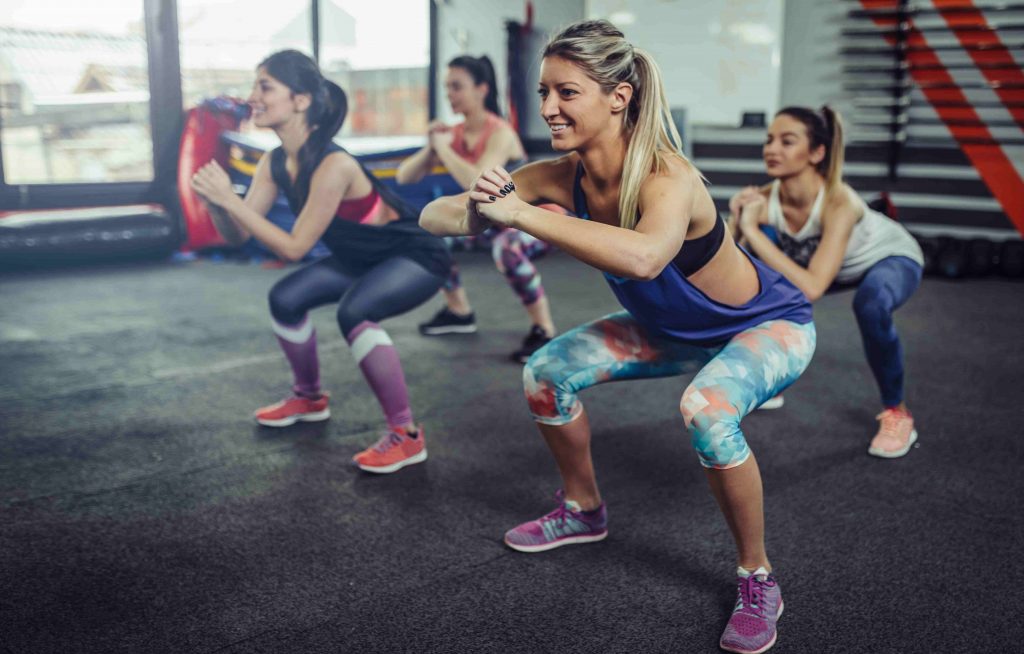How to choose the best music for aerobics classes

Whether you’re just starting out in the world of aerobics or
a seasoned professional, finding the best music for aerobics classes can have a
huge effect on your clients’ motivation.
Music has been proven to have an effect on us when
exercising, with some studies showing that the right music can have positive
physical and psychological effects like pushing you to exercise harder for
longer.
In this blog, we’re going to go
through the relevant licensing you may need to play music during your class and
how to choose the best music for aerobics—but before we do, what exactly is
aerobics?
What is aerobics?
Aerobics can include cardio, stretching, and strength
exercises set to the rhythm of music. It usually involves using your body’s
large muscle groups with the goal of improving your overall fitness.
Aerobics has several health benefits, such as strengthening
your heart and lungs, burning calories, and increasing your serotonin levels.
It’s a great way to maintain good health and have fun.
The clue is in the name ‘aerobic’, which literally means
‘with oxygen,’ as this form of exercise should also improve the cardiovascular
system.
What licences do you need to play music in an aerobics class?
You may need a PPL and a PRS licence to play music during
your aerobics class, depending on the type of music you want to play and where
you’ll be playing it.
A PPL licence permits you to play music publicly on behalf of
the recording rightsholder (such as the original artists and record companies),
and a PRS licence permits you to play music publicly on behalf of
songwriters, composers, and music publishers. If you need both licences, the
two organisations have joined to create TheMusicLicence.
The three things which will impact the licences you need to
buy, are:
Commercially available music: This
includes any song performed by the original artist and requires a PRS and PPL
licence to play during your classes.PPL-free music: Thisrefers to
music that is a cover of the original artist and only requires a PRS licence.Licence-free: As you might have guessed,
this covers music that does not require a PRS or PPL Licence, including any
music that is copyright-free.
Finding the best music for aerobics classes
Now we’ve got the legal bit out of the way, let’s look at
how to find the best music for aerobics classes. The best music for your
aerobics class will depend on several factors, including your planned exercise
routines, what you and your class enjoy most, and how fast you want to move!
Take a look at some of our tips below on how to choose the
best tracks to get your clients moving and keep them engaged:
1.
Check the beat and rhythm
Arguably, the most
important aspect of selecting the right music for any kind of fitness is the
beat and rhythm of the music. The right BPM (beats per minute) works great as
an audible cue to your clients for when to speed up or slow down their
exercises.
Changing the BPM of
your songs can also help give your clients a breather between some of the
faster-paced songs. Take a look at the list below from CNET which includes some of the best BPM scores for
different types of exercise. We’ve even added some well-known songs as examples
for each.

Forms of HIIT (High Intensity Interval Training): 140
to 180+ BPM
Examples:
Steady-state cardio: 120 to 140 BPM
Examples:
Weightlifting: 130 to 150 BPM
Examples:
Warming up for exercise: 100 to 140 BPM
Examples:
Cooling down after exercise: 60 to 90 BPM
Examples:

2.
Consider your clients’ preferences
One of the easiest ways to choose the right music for your aerobics
class is to head right to the source. Ask members of your class what their
favourite genre of music is or their favourite song and see if you can find a
song that you can add to your playlist.
Of course, you might have a large number of people in your
class, so including a mix of music genres in your playlist could be an easy way
to ensure that everyone will hear something they like. This will also help
ensure you regularly update your playlist to keep your clients engaged.
3.
Try something new
Don’t be afraid to step out of your comfort zone when
choosing your music, as not everyone in your class will like the same music
that you do. You could even try and find songs that your clients might not have
heard before, but that you think they’ll enjoy.
Another great way to keep refreshing your playlist is to
pick a new genre each week. You and your class might even find a new favourite
genre in the process. Asking your clients which workout routines they like best
will ensure that you’re always providing them with the content they enjoy, and
then all you have to do is find a new song to match it.
4.
Remember that lyrics matter
It’s not just the beat and rhythm of the music that can help our exercise performance; listening to music with motivational lyrics can also boost our confidence and output.
Therefore, you should try to find songs with a positive
message to play for your class as further encouragement. You’ll have everyone
leaving your class on a happy note.
5.
Pre-plan your playlist
Once you’ve picked out the songs for your class, you need to
plan out the order in which you’ll play them. A good place to start is by
bookending your playlist with your warm-up and cool-down songs.
Then, it’s entirely up to you how you order the songs you’ll
play for the rest of your class. You could gradually increase the intensity of
the exercises and the music or start strong and gradually decrease the speed of
your routines, or you could alternate the intensity of your workouts.

As an aerobics instructor, you can help people reach their
fitness goals and have fun while doing it, but it’s not without its risks.
Whether it’s damage to your equipment or an injury to
yourself or one of your clients, specialist fitness instructor insurance can give you the
peace of mind you need should the worst happen.
Specialist insurance for fitness instructors through
Insure4Sport can protect you against third-party claims, theft and loss of or
damage to exercise equipment you own, and even loss of earnings should you
suffer a personal injury that results in your inability to work.
Learn more about specialist fitness instructor insurance
through Insure4Sport here, or get a quick quote today.







